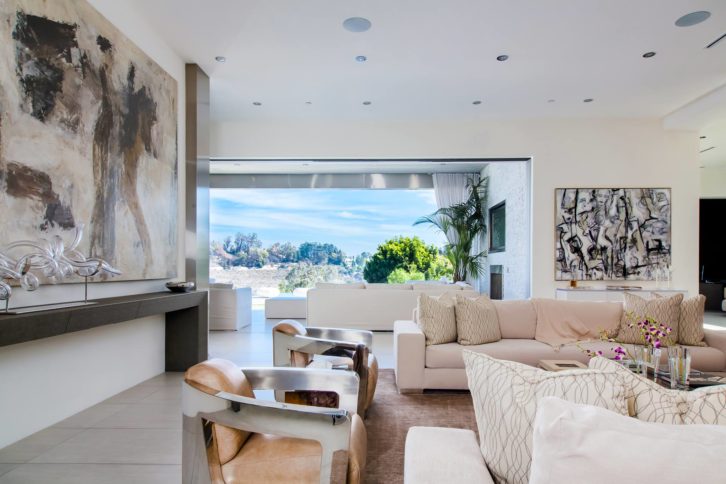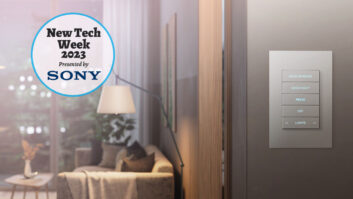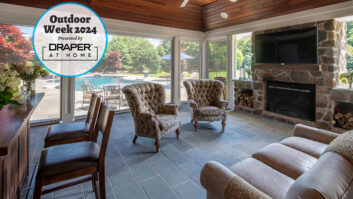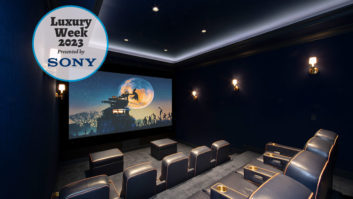
In today’s design world, tech and lifestyle are virtually inseparable; design and tech go hand-in-hand. As a result, when a designer is working for high-end clients, it is not uncommon to involve an integrator.
Who’s On First?
Project status dictates the chronology of players. Regardless, a client in the know may secure one of the top integrators in the country before anyone else is on the team. It is crucial that each player respects the work, budget, and timeline of the others, rendering a cohesive flow to the process.
As for the designer and integrator, if the two rendezvous before embarking on the assignment, they can cultivate a working strategy and camaraderie.
Do I Need You?
One of the biggest challenges when integrating tech and design is making a moment that is both aesthetically pleasing and technologically functional; sometimes these two objectives appear to be at odds. My clients want environments that provide both the conveniences and luxuries that cutting-edge technology offers while also being visually pleasing. Sometimes, this means expressing in styles that would not normally cater to the latest in smart features — consider French provincial.

Technology is an evergreen field; most designers rarely have their finger on its pulse. An integrator is well-versed in the best tech innovations. This knowledge can solve design riddles. In many cases, high-tech suggestions spark solution-based ideas for the designer so that neither the desired look nor the required performance in the room is spared.
An integrator’s insight can also influence a design direction. For instance, the integrator might present specifications based on the designer’s plans that inspire a different, albeit optimal, arrangement. Furniture placement, for example, can be dictated more by a system design than a visual objective. This is especially true in a dedicated home theater.
Integrators sometimes present hard realities relative to what is possible or not. This is generally due to structural impediments. I’ve had a few clients with concrete ceilings who wanted in-ceiling speakers. I was only able to accommodate them by dropping the ceiling. The same goes for concrete walls; I have furred out walls just to host in-wall speakers. This presented a host of obstacles to overcome in an effort to accomplish this, but a good integrator can help ease this process as best as possible and save the designer a lot of headaches. (I explore this more fully in my newly launched blog at Jannarobinson.com.)
Integrators are crucial for space planning and can help free-up walls with modern solutions. I have had more than one project when an integrator was helpful in removing and condensing “wall acne.” Gone are the days of multiple light switches and wall outlets, not to mention the dreaded automated shade faux paus. Goodness knows, a lot of designers can appreciate missteps in this arena. And, if you are working with acoustics and acoustic paneling, an integrator will be your best friend, helping to better design for maximum exploitation of sound properties. Lighting is another pivotal conversation where the integrator will have much to add in terms of best options.
Do You Need Me?
It will benefit a designer to convey an overall vision to the integrator. Only then can the integrator identify hidden issues within the execution of the design and present a total system design. This may involve technical drawings and installation schedules.
Clients often want something that, given the structural infrastructure, is not possible. Integrators need to be clear about feasibility and limitations while also valuing the designer’s aims. However, the integrator should also have a willingness to get creative. An effort to fulfill the requests of the designer on behalf of the client is the goal. If the integrator does not know the solution to a specific issue, this should be communicated. Then both parties can work together to come up with an alternate strategy.

Let’s Get to Work!
Much to the chagrin of my clients, while all parties may have amazing ideas, this does not mean they will always be implemented. Roadblocks can come up from tech limitations within design constraints, and vice versa, though not due to one or the other in isolation. Such is the caveat of an otherwise beneficial symbiosis. Still, this is a small snag in an overall expansive and exciting collaboration that makes it possible for a state-of-the-art lifestyle experience within any setting.
If you’d like to contact me for questions or collaboration, please reach me at jannarobinson.com/contact. I am a residential and commercial interior designer who works remotely and bicoastally servicing primarily Miami, New York, and Los Angeles. You can also find my latest curated products and lifestyle tech/interior design advice at jannarobinson.com.






